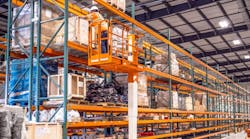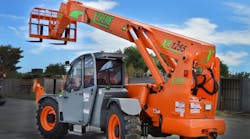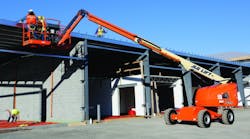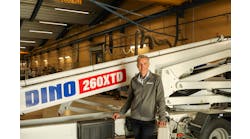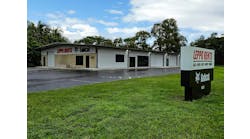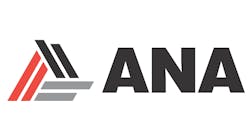Interview with Matthew Elvin: Steady Gains in the Rental Sector
As part of a series of interviews with aerial manufacturers, RER interviews Snorkel CEO Matthew Elvin about proportional throttle, all-electric scissorlifts, load-sensing and handrail height requirements and more.
RER: What have been your most recent technological developments on your equipment?
Elvin: At Snorkel, we have recently introduced and unveiled significant technological advancements across a number of our product lines. At ConExpo 2017, we showed a concept design for an all-electric scissor lift, the Snorkel S3019E. This innovative design has zero hydraulic hoses anywhere on the lift, and has a low step-in height for reduced operator fatigue.
As part of upgrades to our telescopic mast lift family, we introduced the Snorkel TM12E and TM16E at ConExpo 2017. Both of the new lifts include platform load sensing to comply with various national standards, and the TM12E is already in production and available to order.
On our latest line of mid-size telescopic boom lifts, we have introduced proportional throttle, which means that the throttle speed is matched to demand, helping to reduce noise and fuel consumption when only slow speeds are required. We have also introduced engine-mounted generators on this new family of boom lifts, for efficient use of engine power and space.
What new technological developments are on the horizon for you?
Elvin: Following the unveiling of our Snorkel S3019E concept at ConExpo, we plan to expand this range of all-electric scissor lifts, which means that they will have both electric drive and electric steering.
In general, what trends do you see coming up in aerial equipment?
Elvin: With ever increasing noise and emissions regulations, we expect to see a continued increase in demand for electric-driven lifts that comply with these requirements and avoid the complexities associated with diesel engines.
In response to the requirement for increased productivity from within our customer base, we are continuing to see demand for higher capacity lifts. As demonstrated by our latest line of mid-size telescopic boom lifts, we are already designing our new lines with higher than industry standard capacities. The new Snorkel 660SJ, for example, has an unrestricted lift capacity of 600 pounds. We anticipate that this trend will continue, and as such we are giving greater focus within our research and development process as to how we increase capacity without increasing dimensions and/or weight.
How will the next version of the ANSI standards change things in the aerial equipment market? What changes are you making in manufacturing to conform to those incoming standards?
Elvin: Aside from the obvious changes in platform load sensing, the new standard will allow us to begin manufacturing a more homogenized machine so that one unit can be shipped globally.
The new handrail height requirement of 43 inches (1.1m) will affect a lot of 19-foot scissor lifts, as fixed rails won’t be achievable on many existing models. The new line of Snorkel all-electric scissor lifts will accommodate this new requirement because of the low entrance height.
All of our new products being released this year already including platform load sensing, and many or all of the other features required for A92.20 compliance to help our customers’ transition to the new standard.
What new safety developments and safeguards have you made on your equipment?
Elvin: Snorkel was the first manufacturer to include a form of secondary guarding as standard on all new-build boom lifts, as well as offer a retrofit option for most existing models in the field. Snorkel Guard has been well received by our customers globally, who appreciate the simple design which does not include any electronics, reducing unnecessary call-outs and maintenance work.
In general, what are your expectations for the aerial market in the foreseeable future, in North America and internationally?
Elvin: Our customers in North America, and around the world, are optimistic. We are expecting trading conditions to remain positive, and this is backed by the recent reports from the American Rental Association who just this week released their latest quarterly update which suggest that we will see steady gains in the rental sector through 2021. Internationally, IPAF recently released their rental market report, which suggests that Europe has entered a phase of steady growth for the second year running, which is expected to continue in the coming years. These are all very good signs for our industry, with the majority of aerial lifts being sold into the rental sector.
